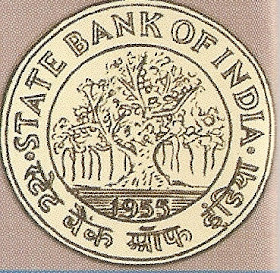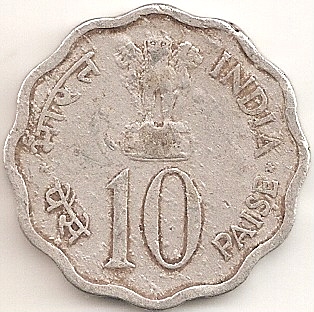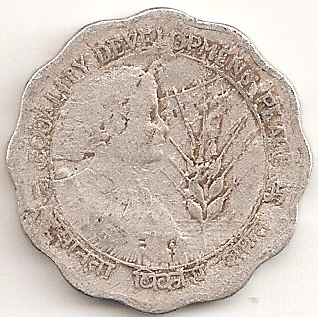State Bank of India is one of the few Organisations in India, which has a heritage spanning over two hundred years.
Its exciting development into the large Organisation that it has become with multi-faceted Banking activities across the Globe ( it has come a long way from the early days when the Bank of Calcutta was created in 1806)was recognized by the monetary regulator, the Reserve Bank of India and Commemorative coins were issued in 2006 to celebrate the bicentenary of the Bank’s creation.
Early history of Banking in India during the times of East India Company:
Bombay had been given as dowry to the King of England in 1661 by the Portuguese, which he transferred to the East India Company in 1669 for a rental.
In 1671, the East India Company started minting their own coins which led to a dispute with the Mughal King Aurangzeb, which was sorted out, when it was decided that the East India Company issues were to be circulated as currency in the territories governed by the Company only.
In 1720, the Company set up a Bank in Bombay, for the main purpose of carrying on trading activities and increasing the Company’s revenues, its earlier attempts to set up a Bank in Madras towards the end of the seventeenth century, having met with limited success.
All along several private Banks continued to do business , apart from indigenous Banks in various major business centres, in India.
All along several private Banks continued to do business , apart from indigenous Banks in various major business centres, in India.
In between, the Bank of Hindostan was set up in 1770, managed by a private group.
In 1773, Warren Hastings, the then Governor-General of India, floated the General Bank of Bengal and Bihar.
In 1776, the General Bank of India commenced operations independently.
Setting up of the Bank of Calcutta and the Presidency Banks of Bengal, Calcutta and Madras:
After many schemes for larger Banking operations in Bengal, by the East India Company, the plan devised by Henry St. George Tucker, the Accountant General of the Government of Bengal, and later the Chairman of the East India Company, finally led to the setting up of the Bank of Calcutta in March 1806, and it commenced Banking Operations for the public on 2nd June 1806.
The success and growing operations of the Bank of Calcutta, led to the establishment of the Presidency Bank of Bengal which commenced public operations on 2nd March 1809. This was the first joint-stock bank in British India.
An important safeguard built into the guidelines for operation of this Bank was, that, the monetary and personal stakes of the East India Company’s Government and the private commercial interests of English/European traders were clearly defined , so that the Bank would neither be governed strictly by the Company’s Government policies nor would it be solely governed by entirely private enterprise interested only in making fast money.
Thus, both public and private interests were taken care of – an aspect that State Bank of India follows , in principle, to the present day .
Emblem/seal of the Bank of Bengal (shown above).
On 15th April 1840, the Presidency Bank of Bombay was set up to cater to banking business in Bombay and neighbouring territories.
Emblem of the Bank of Bombay (shown above).
On 1st July 1843, the Presidency Bank of Madras commenced public operations for territories governed by the Company and neighbouring areas.
Emblem of the Bank of Madras (shown above).
Notice that it is similar to the Coat of Arms of the East India Company. (Please see my post on East India Company under article no. 1 on this blog).
Like the Bank of Bengal, the Bank of Bombay and the Bank of Madras were joint –stock Banks. All three Banks were created under Royal Charters.
A noteworthy point is that all three Presidency Banks were authorized to issue paper currency in 1861 under the Paper Currency Act , around the time when the East India Company’s control over currency and coinage matters was being transferred to the British Government, and the “Regal issues” (coins) were being envisaged. This note issuing authority was ,later, taken over by the Reserve Bank of India in 1935.
Amalgamation of Presidency Banks into the Imperial Bank of India:
By the Imperial Bank of India Act 1920, for uniformity in All India operations in all the territories in India under British Rule, the three Presidency Banks were merged to form the Imperial Bank of India.
Emblem/seal of the Imperial Bank of India, which is similar to the coat of Arms of the East India Company as well as the emblem of the Bank of Madras.
Under the recommendations of the All-India Rural Credit Survey Committee, the Imperial Bank was Nationalised by the Government of India and the State Bank of India was created on 1st July 1955. The State Bank is different from other Nationalised Banks, in that its operations are governed by the State Bank of India Act.
The first Emblem of the State Bank of India adopted in 1955 showing a banyan tree. The emblem of the banyan tree was adopted because, the banyan tree has strong roots and its branches are capable of propagating and growing because of its aerial roots.
However, this logo was later abandoned, as it invited criticism that a Banyan tree does not let any other plant grow within its space (a symbolism that the other smaller Banks in operation in India, also needed to grow in operations)
However, this logo was later abandoned, as it invited criticism that a Banyan tree does not let any other plant grow within its space (a symbolism that the other smaller Banks in operation in India, also needed to grow in operations)
This logo is open to several interpretations:
- a) The most commonly interpreted one is that the small circle in the centre denotes that despite its large size, it is always the common man who holds the centre-stage in State Bank Operations.
- b) The next interpretation is, that the white circle on blue background denotes a “key-hole” (presumably that of a locker) indicating that it symbolizes security and trust.
- c) A third interpretation is, that it is key-hole to the customer’s future and the moment one becomes a State Bank customer, one looks to a future which holds promise for one’s progress and achievement in business and life.
- d) A fourth interpretation is that the white round circle is like a stone thrown in a pond, and symbolizes that once a deposit is made with the State Bank, it has a ripple effect and the deposit grows and grows on its own leading to prosperity and happiness in life.
- e) A fifth interpretation is that the white circle denotes a State Bank of India Branch, which will be found anywhere you go, even in the narrow lanes of towns and cities. In other words, the State Bank will be there to serve you, wherever you go.
To commemorate two hundred years of the operations of State Bank of India and its predecessors, the Reserve Bank of India took out a 100 rupee proof/uncirculated commemorative coin. Also, it took out a five rupee coin for circulation. Both coins had the above State Bank logo as their central design. I could not lay hands on the 100 rupee coin, but I have a few specimens of the five rupee coin issues, minted in both cupro-nickel and Ferratic stainless steel (FSS) one of which I am representing here:
Obverse of the coin shows the Lion capital of Emperor Asoka on top, with the words “Satyameva Jayate” below the Lion Capital which complete the Government of India emblem. Also, the numeral “5” is below the Lion Capital denoting the denomination of the coin. The words, “Bharat and rupiye” in Hindi are there on one side of the Lion Capital and the words “India and Rupees “ in English on the other side of the Lion capital.
Reverse of the coin issued by Hyderabad mint (notice the star mint mark below the State Bank of India (SBI) logo. The SBI logo is flanked by the years 1806 and 2006 (indicating the bicentenary of SBI’s celebrations). On top of the coin are the words “Bhartiya State Bank “ in Hindi and at the bottom of the coin are the words “State Bank of India “ in English.
The Posts and Telegraphs Department also brought out a First Day cover on the state Bank of India’s bicentennial, an image of which is presented here.
On the first day cover, on the stamp , on the top are impressions of Bank notes issued by the Bank of Bengal, Bank of Bombay and the Bank of Madras (in that order) and one of the seals/emblems of the Imperial Bank of India (similar to the Standard /Coat of Arms of the East India Company.
The large buildings are those of the Bank of Bengal, the Bank of Bombay in front and ,that , of the Bank of Madras on the back.
The words “Pratham Divas Aavaran” in Hindi are followed by the words “ First Day cover “ in English, below which are the numerals/words 200 years.
The large building to the bottom left hand side of the envelope is that of the State Bank of India Mumbai branch , as it exists today.
On the extreme right hand of this building , is the stamp of the Posts and Telegraph Department in the form of the State Bank logo (present day) with the date of issue 31st August 2005, indicating that the year-long bicentenary celebrations have commenced.
On the bottom line of the cover is the Operational seal of the Imperial Bank of India, followed by several Bank Notes which were issued by various Banks in the eighteenth, nineteenth and twentieth centuries, in India (Notice the words “ The Bank of Bengal” ,“Bank of Hindostan” , “Bank of Madras” , “Bank of Bombay” , “The Imperial Bank of India” and “Government of India” on the images of these notes).
In the centre of this section, there is a very prominent picture of a Gold Mohur with a lion facing left, standing under a palm tree with several leaves. Coins with images like these were, commonly, issued under the Standard coinage 1835 issues, during the time of King William IV and Queen Victoria. Notice anything familiar about this image? No, nothing familiar? Well, yes!! This is similar to the logo of the Reserve Bank of India (RBI) which is still the same today. (The RBI celebrated its platinum jubilee – 75 years of existence – in 2010. They have brought out commemorative coins in the 75 rupees, ten rupees, five rupees, two and one rupee denominations, out of which the last four have also been issued for circulation. If you have come across the five rupee denomination coin, it is “golden” in colour and looks exactly like this coin, except that the Lion has been replaced by a tiger, in its central design. I will be covering this aspect in detail under my post on the RBI )
State Bank of India, under its chairman Shri R.K Talwar, also, commissioned a project to Shri A.K.Bagchi, an eminent economic historian, to write a detailed book on the history of the Bank’s heritage.
The project spanned the tenures of 8 chairmen of the State Bank and the book titled “The Evolution of the State Bank of India – The Roots 1806 to 1876 “ (in Two volumes – Part 1 1806 to 1860 titled “The early years” and Part II 1861 to 1876 titled “ Diversity and Regrouping “)came out in January 1987. The content was culled from the vast historical records/documents/pictures which the State Bank possesses.
The project spanned the tenures of 8 chairmen of the State Bank and the book titled “The Evolution of the State Bank of India – The Roots 1806 to 1876 “ (in Two volumes – Part 1 1806 to 1860 titled “The early years” and Part II 1861 to 1876 titled “ Diversity and Regrouping “)came out in January 1987. The content was culled from the vast historical records/documents/pictures which the State Bank possesses.
I was rather excited about these books and booked an advance copy with Ram Advani Booksellers in Lucknow . The two volume set cost me Rs.300/- then which was quite a substantial amount in 1987.
For the first time, I read about the history of the Presidency Banks, cowries, siccas, khazanchees, Agents (Branch Managers), the Arcot rupee, the copper, silver and gold mohurs/coins under the Standard coinage , Bank Notes issued by various Presidency Banks etc.
For the first time, I read about the history of the Presidency Banks, cowries, siccas, khazanchees, Agents (Branch Managers), the Arcot rupee, the copper, silver and gold mohurs/coins under the Standard coinage , Bank Notes issued by various Presidency Banks etc.
A cover of one part of the Book , which is in my personal library, in the design available in 1987, is placed here for illustration.
Posted on 20.01.2019:
A few days ago, I received an Indian Postage Stamps Album from Shri Praveen Kumar Gupta, Managing Director (Retail & Digital Banking), State Bank of India, Corporate Centre, Mumbai, who is my batchmate (1982 batch of SBI Probationary Officers) on the Stamps brought out by India Post on 31.08.2005 on the occasion of the State Bank of India completing 200 years of Banking Operations. I have been moved beyond words by his nice gesture.
Despite the fact, that this stamp album is almost 14 years old now, the stamps and First Day Cover (FDC) contained in it are in mint-fresh condition. This is an priceless addition to my Philatelic collection. Thank you Praveen.
The Cover of the India Postage Stamps Album shows the logo of India Post at top left and the name & postal address of the Chief Postmaster General, Maharashtra Circle, Mumbai at bottom left.
Eight of the twelve stamps contained in the Stamp Album shows the 1500 Paise (or Rs.15/- ) stamp described elsewhere in this post
Four of the remaining twelve stamps contained in the Stamp Album, making for a total of twelve stamps
The First Day Cover (FDC) contained in the Stamp Album (described in detail elsewhere in this post). The "smudges" are on account of my old photocopier, but the stamps & FDC are in great condition
The Brochure accompanying the stamps is also contained in the Stamp album
Some other posts on Banks on this Blog:















































